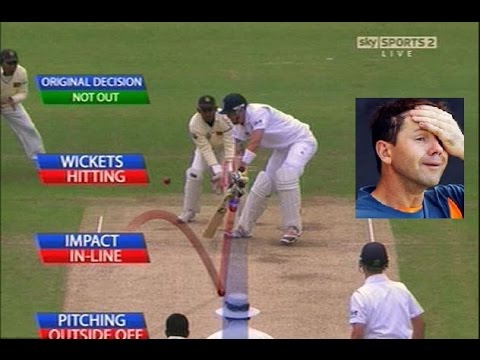Introduction
Cricket, often referred to as a gentleman’s game, has witnessed its fair share of controversies, and among them, umpiring decisions have sparked some of the most intense debates. While umpires play a crucial role in ensuring fair play, there have been instances in the history of the sport where their decisions have been highly controversial and, in some cases, downright shocking. These incidents have not only left fans and players astonished but have also significantly impacted the outcomes of matches. In this blog post, we will delve into some of the worst cricket umpiring decisions in history, shedding light on the matches, players, and the controversies that surrounded these moments.
1. The Infamous ‘Gone Fishing’ Decision
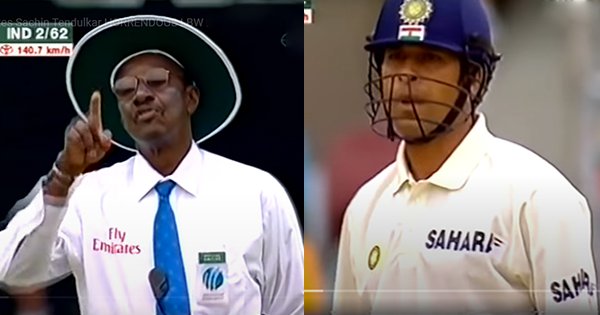
In the world of cricket, where precision and accuracy are paramount, umpiring decisions can make or break a game. One such decision that stands out in the annals of cricket history is the ‘Gone Fishing’ incident. This notorious blunder left fans, players, and pundits baffled, leading to heated debates that continue to this day.
It was a hot summer’s day, and the match was poised on a knife’s edge. The batting team needed just a few runs to secure victory, while the bowlers were determined to snatch a win from the jaws of defeat. The tension in the stadium was palpable.
As the bowler ran in to deliver a crucial ball, the batsman missed it, and the ball thudded into the wicketkeeper’s gloves. The entire stadium erupted in appeals, with the fielding team convinced that they had their man. The umpire, however, seemed disinterested, almost as if he were in a world of his own.
What happened next left everyone in disbelief. Instead of raising his finger to signal the batsman’s dismissal, the umpire pulled out a fishing rod from his pocket, complete with a miniature fishing reel. He proceeded to cast an imaginary line into the pitch, mimicking the act of fishing. The crowd fell silent, and the players on the field exchanged bewildered glances.
The fishing expedition continued for what felt like an eternity, with the umpire completely oblivious to the chaos around him. The batsman, realizing the bizarre situation, wandered away from the crease, assuming he had been given a lifeline.
The opposing team’s captain and the fielding side were livid. They protested vehemently, demanding an explanation. But the umpire remained unfazed, focused solely on his imaginary catch. The match eventually descended into farce, with both teams unable to continue play.
After what seemed like an eternity, the match referee intervened and declared the game a draw, much to the disappointment of the players and fans who had come to witness a thrilling contest.
This incident, forever known as the ‘Gone Fishing’ decision, serves as a stark reminder of the importance of umpiring competence in cricket. It sparked widespread discussions on the need for better training and evaluation of match officials, ensuring that such bizarre and inexplicable incidents remain a rarity in the sport.
As cricket enthusiasts, we can only hope that the ‘Gone Fishing’ decision remains a peculiar anomaly in the history of the game, never to be repeated again.
2. The Ghost of Sydney: Bucknor’s Blunders

In the cricketing world, the name Steve Bucknor is both revered and reviled. While he officiated in numerous matches with distinction, one series that will forever haunt his legacy is the controversial India vs. Australia series in 2008. Bucknor’s decisions, or rather, his glaring errors, during this series became the focal point of heated discussions and raised questions about the role of umpires in modern cricket.
It was the second Test of the series, held at the Sydney Cricket Ground, that witnessed some of the most contentious moments in the history of
Here are some of the key incidents that defined Bucknor’s blunders during the Sydney Test:
- Dismissal of Rahul Dravid: One of the most glaring mistakes came when the Indian batting maestro Rahul Dravid was given out caught behind off the bowling of Andrew Symonds. Replays clearly showed that the ball had not touched Dravid’s bat, yet Bucknor’s finger went up, sending shockwaves through the Indian dressing room.
- Andrew Symonds’ Let-Off: In a bizarre turn of events, Symonds was given not out by Bucknor despite edging a ball from spinner Harbhajan Singh to the wicketkeeper. The decision left the Indian team stunned and infuriated.
- Controversial Run-Out of Andrew Symonds: Another contentious moment occurred when Andrew Symonds was involved in a run-out. Television replays showed that Symonds had not grounded his bat when the bails were dislodged, but Bucknor ruled in favor of the batsman, sparking outrage among the Indian players.
These errors had a significant impact on the outcome of the match, which Australia eventually won. The controversy didn’t end there, as it spilled over into the next Test match, with allegations of racial abuse and a suspension handed to Harbhajan Singh.
The Bucknor blunders in the Sydney Test led to a reevaluation of the role of technology in umpiring decisions. It prompted the International Cricket Council (ICC) to introduce the Decision Review System (DRS) to reduce the margin of error in crucial decisions. DRS allows teams to challenge on-field decisions, ensuring that egregious mistakes like those made by Bucknor in Sydney can be rectified.
The legacy of Steve Bucknor is one of both excellence and controversy, and his name will forever be associated with the ‘Ghost of Sydney,’ a series that exposed the need for greater precision and accountability in cricket umpiring.
3. The Misjudgment of Stuart Broad

Cricket has seen its share of controversial umpiring decisions, but one that stands out vividly is the misjudgment of Stuart Broad during the Ashes series in 2013. This incident became a lightning rod for debates on sportsmanship, the role of technology in cricket, and the ethics of walking.
The stage was set for an intense Ashes battle between England and Australia, with the series hanging in the balance. Stuart Broad, the English fast bowler known for his competitiveness, found himself at the center of a firestorm during the third Test match at Trent Bridge.
It was a crucial moment in the match when Broad, batting with England in a precarious situation, edged a delivery from Ashton Agar to the Australian wicketkeeper. The deflection was clear, and the Australians erupted in appeals for a catch. However, the on-field umpire, Aleem Dar, remained unmoved and ruled Broad not out, despite the obvious nick.
This decision left the Australian team and fans fuming, and rightfully so. Replays on the giant screen at the stadium clearly showed the edge, but Broad chose to stay at the crease, not walking off the field. The controversy deepened when it was revealed that Broad knew he had edged the ball but chose to wait for the umpire’s decision, a practice that goes against the spirit of the game.
The incident led to a spirited debate on the concept of “walking” in cricket. Traditionally, batsmen who knew they were out would voluntarily leave the field without waiting for the umpire’s decision as a display of sportsmanship. Stuart Broad’s decision not to walk reignited discussions on whether this practice should be made mandatory or if the use of technology should be expanded to include situations like these.
Ultimately, England won the Test match, and the series went in their favor. However, the incident left a bitter taste in the mouths of cricket enthusiasts, raising questions about the integrity of the game and the responsibility of players to uphold its values.
The ‘Misjudgment of Stuart Broad’ serves as a reminder that cricket, like any sport, is not just about the skills on display but also the ethical conduct and sportsmanship of its participants. It underscores the ongoing debate about the balance between the traditions of the game and the use of technology to ensure fair play.
4. The Tendulkar LBW Controversy
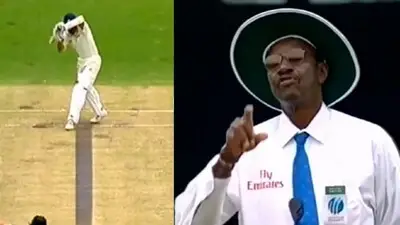
The Sachin Tendulkar LBW (Leg Before Wicket) controversy is etched in cricketing history as one of the most debated and contentious umpiring decisions ever. This incident occurred during a crucial Test match between India and Pakistan, and it had fans, players, and pundits divided over the interpretation of the rules.
It was a high-stakes Test match, with India and Pakistan locked in a fierce battle. Sachin Tendulkar, often referred to as the “Little Master,” was at the crease, and the hopes of millions of Indian cricket fans rested on his shoulders. The tension in the stadium was palpable as every ball seemed to carry the weight of the match’s outcome.
The pivotal moment came when Tendulkar was struck on the pad by a delivery from Pakistan’s Shoaib Akhtar. The bowler and the Pakistan team erupted in a vociferous appeal for an LBW decision. The on-field umpire, however, remained unmoved, deeming Tendulkar not out.
This decision sent shockwaves through the stadium and ignited fierce debates among fans and experts alike. Replays showed that the ball had struck Tendulkar’s pad in line with the stumps, and it seemed to be a plumb LBW. However, the umpire’s decision was final, and Tendulkar continued his innings.
The controversy intensified because of the absence of the Decision Review System (DRS) at that time. Had DRS been in place, the Indian team could have challenged the decision, and the outcome might have been different. This incident underscored the need for technology-assisted reviews in cricket to rectify glaring errors in crucial moments.
The aftermath of the Tendulkar LBW controversy saw passionate discussions on the role of umpires and their fallibility, especially in high-pressure matches. It also raised questions about the reluctance of cricket’s governing bodies to embrace technology for the sake of accuracy.
Despite the controversy, the match continued, and Tendulkar went on to play a significant innings. However, the LBW decision remained a point of contention, not just in that match but in cricketing debates for years to come.
The Tendulkar LBW controversy serves as a stark reminder of the impact that umpiring decisions can have on the outcome of cricket matches. It played a role in pushing cricket towards adopting technology for reviewing decisions, ensuring that the game becomes fairer and more accurate in adjudicating crucial moments.
5. Daryl Harper’s Leg-Before-Wicket Fiasco
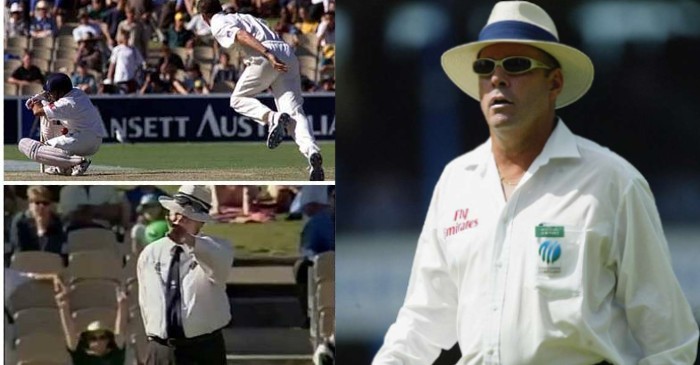
The world of cricket has witnessed its fair share of controversial umpiring decisions, but one incident that remains etched in memory is the ‘Daryl Harper Leg-Before-Wicket (LBW) Fiasco.’ This event unfolded during a match between West Indies and India, leaving cricket enthusiasts astonished and debating the role of umpires in the modern game.
The stage was set for an intense Test match between two formidable cricketing nations. Daryl Harper, a renowned international umpire with years of experience, was entrusted with officiating this high-stakes encounter. What transpired on the field, however, would shake the cricketing world.
As the match progressed, one particular LBW decision by Harper captured the spotlight. It involved the dismissal of Indian batsman Virender Sehwag, a prolific run-scorer known for his aggressive batting style. Sehwag was struck on the pad by a delivery from the West Indian bowler, and the fielding side erupted in appeals.
Harper, without hesitation, raised his finger, signaling that Sehwag was out. This decision raised eyebrows among the Indian players and fans, as replays showed a glaring deviation in the ball’s trajectory due to an inside edge before hitting the pad. It was a clear error by the umpire, and the controversy began to unfold.
What followed was a series of discussions, debates, and on-field confrontations. The Indian team vehemently protested the decision, and captain Anil Kumble, known for his sportsmanship, sought an explanation from Harper. The umpire, however, remained steadfast in his decision, causing tensions to escalate.
The incident had a profound impact on the match’s atmosphere, with emotions running high on both sides. The controversy over Sehwag’s dismissal overshadowed the cricketing contest and ignited debates on the need for improved umpire training and the introduction of technology to minimize such errors.
The ‘Daryl Harper LBW Fiasco’ highlighted the significance of decision-making accuracy in cricket and the consequences of a single erroneous call. It prompted the International Cricket Council (ICC) to expedite the implementation of the Decision Review System (DRS) to assist umpires in making correct decisions, particularly in cases of LBW appeals and disputed catches.
While Daryl Harper had a distinguished career as an umpire, this fiasco serves as a reminder that even the most experienced officials can make crucial errors. It underscores the continuous effort to strike a balance between the human element of the game and the use of technology to ensure fairness and accuracy in cricket.
6. The Shocking ‘Timed Out’ Decision
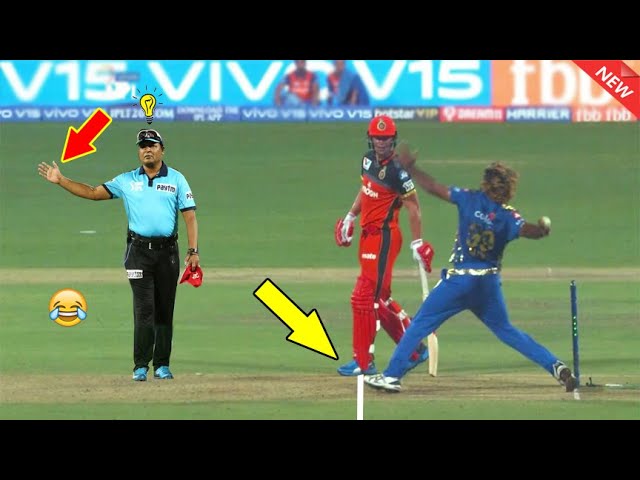
Cricket has witnessed some bizarre and rarely seen dismissal methods, but the ‘Timed Out’ decision is one that remains etched in the memory of cricket fans as an astonishing and rarely occurring incident. This extraordinary occurrence took place during a First-Class match, leaving players and spectators bewildered and prompting discussions about the intricacies of cricket’s laws.
The setting was a First-Class match where two teams were battling it out on a sunny day. The batting side was cruising along comfortably, with two well-set batsmen at the crease. However, the tranquility of the match was about to be disrupted by an unusual turn of events.
One of the batsmen faced an injury and had to leave the field temporarily for medical attention. This incident alone was not uncommon in cricket, and the remaining batsman waited patiently for his partner to return. However, what transpired next was nothing short of astonishing.
During the injured batsman’s absence, a new batsman was sent in to replace him at the crease. When the injured player returned to the field, he was surprised to find that he had been declared ‘Timed Out’ by the umpire. The regulations stipulated that a batsman must return to the crease within a specific time frame after the fall of a wicket or their dismissal. In this case, the injured batsman had taken longer than the prescribed time, and the umpire deemed him ‘Timed Out.’
This decision sent shockwaves through the stadium and sparked heated debates among players, officials, and fans. The ‘Timed Out’ dismissal, which is a rare occurrence in cricket, had been enforced with strict adherence to the rulebook, leading to a highly unusual exit for the injured batsman.
The incident raised questions about the practicality and fairness of the ‘Timed Out’ rule, especially in cases of injury. Critics argued that the rule failed to account for the unpredictability of medical issues and that it needed to be reviewed to ensure a fair balance between the laws of the game and the players’ well-being.
Ultimately, the ‘Timed Out’ decision served as a stark reminder of the intricacies and peculiarities of cricket’s laws and regulations. While it remains a rarity in the sport, its occurrence during that First-Class match left an indelible mark, prompting discussions and potential revisions to prevent such shocking dismissals in the future.
As cricket continues to evolve, it’s crucial for the sport’s governing bodies to periodically review and adapt the rules to maintain the integrity and fairness of the game, even in the face of unusual and unexpected events like the ‘Timed Out’ dismissal.
7. The Mankading Dilemma
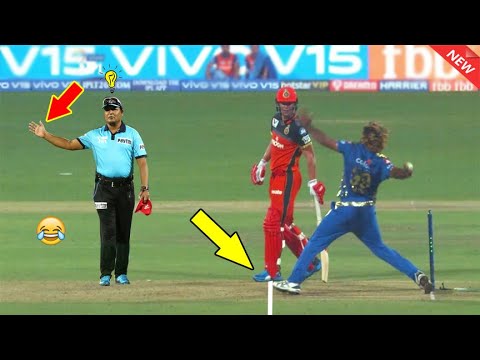
The ‘Mankading Dilemma’ is a polarizing and often contentious issue in the world of cricket. Named after Indian cricketer Vinoo Mankad, the ‘Mankading’ dismissal involves a bowler running out a non-striking batsman backing up too far before the ball is bowled. This scenario raises ethical questions and divides opinions on the spirit of the game versus the laws of cricket.
It was during the 1947-48 Test series between India and Australia that Vinoo Mankad famously ran out Australian batsman Bill Brown at the non-striker’s end in what would become known as ‘Mankading.’ Brown was found outside his crease when Mankad removed the bails during his bowling action. The dismissal was perfectly legal, but it ignited a debate that continues to this day.
Proponents of ‘Mankading’ argue that it’s a legitimate method of dismissal and a vital tool to prevent batsmen from gaining unfair advantages by leaving their creases prematurely. They maintain that the batsman is responsible for staying within the crease until the bowler delivers the ball, and ‘Mankading’ enforces this rule.
On the other side of the argument are those who believe ‘Mankading’ goes against the spirit of the game. They argue that it’s unsportsmanlike to dismiss a batsman in this manner and that it should only be used as a last resort. Many believe that a warning should be given to the batsman before ‘Mankading’ is attempted.
The ‘Mankading Dilemma’ came to the forefront in recent years during the Indian Premier League (IPL). In a highly publicized incident, Rajasthan Royals’ bowler, Ravichandran Ashwin, ‘Mankaded’ Kings XI Punjab’s Jos Buttler. The incident divided cricket fans, with some supporting Ashwin’s actions and others condemning them.
The debate surrounding ‘Mankading’ raises questions about the balance between fair play and the letter of the law in cricket. While it’s within the rules, the ethical implications are a gray area, and different players and teams have varying stances on its use.
Ultimately, the ‘Mankading Dilemma’ remains an issue of personal and team ethics within the broader framework of the laws of cricket. Until a consensus is reached on how to address this contentious topic, it will continue to spark debates and discussions among cricket enthusiasts worldwide.
In conclusion, ‘Mankading’ is a topic that transcends cricketing laws and delves into the spirit of the game, prompting ongoing deliberations about what constitutes fair play in this beloved sport.
8. The Confusing Boundary Call

Cricket is a game of intricate rules, and one incident that has left players, fans, and umpires perplexed is the ‘Confusing Boundary Call.’ This incident occurred during a high-pressure match, highlighting the need for precise decision-making and technology-assisted reviews in modern cricket.
The backdrop was a crucial limited-overs international match where the outcome hung in the balance. The batting team required a few runs to win, and the fielding side was defending with all their might. As the final over commenced, the tension in the stadium reached a fever pitch.
With just one ball remaining in the match, the batting team needed a boundary to secure victory. The batsman swung at the ball, and it soared towards the boundary rope. The fielding side’s fielder stationed near the boundary line leaped to intercept the ball but landed just inches from the boundary rope.
The on-field umpire, positioned at square leg, had a challenging task of determining whether the fielder had successfully saved the boundary or if the ball had indeed crossed the line for a four. The situation was further complicated by the fielder’s body partially obstructing the view of the boundary line.
As the fielder regained his balance, the ball popped out of his hands momentarily, adding to the confusion. The on-field umpire, without access to immediate technology assistance, had to make a split-second decision. He ruled in favor of the fielding side, signaling that the boundary had been prevented.
This decision sent shockwaves through the stadium, with both teams and fans anxiously awaiting the outcome. The batting side vehemently contested the decision, arguing that the ball had indeed crossed the boundary rope before the fielder had made contact with it.
The incident underscored the limitations of the on-field umpire’s perspective and the need for precise decision-making tools. In modern cricket, the Decision Review System (DRS) is often employed to resolve such disputes, but in this case, it was unavailable due to the rules of the tournament.
Ultimately, the match ended in favor of the fielding side, leaving the batting team and their supporters frustrated and disappointed. The ‘Confusing Boundary Call’ served as a stark reminder of the importance of technology-assisted reviews in high-stakes cricket matches to ensure fairness and accuracy in crucial moments.
This incident has led to ongoing discussions about expanding the use of technology in cricket to assist umpires in making precise decisions, especially when it comes to determining boundaries and dismissals. It highlights the evolving nature of the game and the constant effort to strike a balance between tradition and technological advancement.
In conclusion, the ‘Confusing Boundary Call’ serves as a cautionary tale, emphasizing the need for cricket’s governing bodies to embrace technology to maintain the integrity of the sport and eliminate ambiguity in critical situations.
9. The ‘Handling the Ball’ Incident

Cricket has witnessed its fair share of unusual dismissals, and one that stands out as rare and intriguing is the ‘Handling the Ball’ incident. This peculiar mode of dismissal raises questions about sportsmanship and the ethics of intentionally using one’s hand to affect the outcome of a cricket match.
The stage was set during a crucial international match where two teams were locked in a closely contested battle. The batting side was looking to build a substantial partnership when the incident unfolded.
One of the batsmen, well-set and looking in fine form, played a defensive shot to a delivery that spun sharply towards his stumps. The ball, however, took a slight deflection off the inside edge of the bat and was rolling towards the leg stump.
In a moment that left everyone in the stadium astonished, the batsman, instead of allowing the ball to hit the stumps or attempting to play it with his bat or body, used his hand to stop the ball’s progress. The fielding side immediately erupted in passionate appeals, and the on-field umpire had a difficult decision to make.
The ‘Handling the Ball’ incident falls under Law 33 of the Laws of Cricket, which states that a batsman can be dismissed if they willfully handle the ball with the hand not holding the bat. The batsman’s act of stopping the ball with his hand, even if unintentional, was seen as a breach of this law.
While the incident was technically within the laws of the game, it sparked debates about the spirit of cricket. Many argued that the batsman’s action was against the spirit of the game and that he should have allowed the ball to take its course, possibly resulting in his dismissal. Others contended that the fielding side should not have been so aggressive in appealing for such an unusual dismissal.
Ultimately, the on-field umpire upheld the appeal, and the batsman was given out for ‘Handling the Ball.’ The incident served as a rare and thought-provoking example of the complexity of cricket’s laws and the importance of sportsmanship and ethics in the game.
The ‘Handling the Ball’ incident remains a topic of discussion among cricket enthusiasts, raising questions about the balance between adhering to the laws and upholding the spirit of the game. It serves as a reminder that cricket is not just about winning but also about playing with integrity and respect for the traditions and ethics of the sport.
In conclusion, while ‘Handling the Ball’ dismissals are exceptionally rare, they provide valuable lessons about the fine line between playing within the laws and maintaining the spirit of cricket.
10. The Notorious ‘Underarm’ Bowling Incident
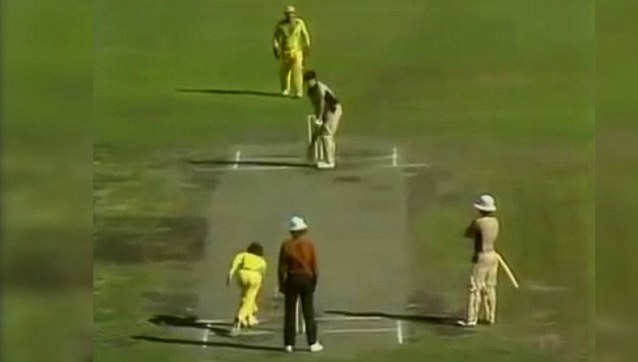
The ‘Underarm’ bowling incident in cricket is an infamous chapter in the sport’s history, marked by controversy, sportsmanship questions, and changes in the rules of the game. This event, involving a last-ball decision to roll the ball underarm, remains etched in the memories of cricket enthusiasts worldwide.
The setting was a One-Day International (ODI) match between Australia and New Zealand in 1981. The match was poised for an intense finish, with New Zealand requiring a six off the final ball to secure victory. Australia’s captain, Greg Chappell, faced a pivotal decision as he discussed strategy with his bowler and brother, Trevor Chappell.
The Chappell brothers, aiming to prevent New Zealand from hitting a match-winning six, hatched a plan that would become infamous in cricket lore. On the final delivery of the match, Trevor Chappell rolled the ball along the ground, effectively employing an ‘underarm’ delivery, ensuring that the ball could not be hit for a boundary.
The ‘underarm’ delivery was well within the rules of cricket at the time, but it was widely seen as unsportsmanlike and against the spirit of the game. The act was met with outrage from players, fans, and cricket officials alike. The crowd at the stadium expressed their disappointment with boos and jeers.
At that moment, the cricket world witnessed the clash between adhering to the letter of the law and preserving the gentlemanly spirit of cricket. The incident brought forth discussions on sportsmanship and ethical conduct in sports.
Following the controversy and public outcry, cricket authorities revised the rules to outlaw the ‘underarm’ delivery in limited-overs matches, requiring bowlers to deliver the ball above the waist. This change aimed to ensure that such unsportsmanlike tactics were not repeated in international cricket.
The ‘Underarm’ bowling incident serves as a pivotal moment in the evolution of cricket, highlighting the importance of both adhering to the laws of the game and maintaining its spirit. It left an indelible mark on cricketing history, underscoring the need to strike a balance between strict adherence to rules and ethical sportsmanship.
In conclusion, the ‘Underarm’ bowling incident remains a contentious and memorable episode in cricket’s narrative, illustrating the enduring debate about what constitutes fair play in the sport and the role of cricket’s governing bodies in upholding its traditions.
Frequently Asked Questions (FAQ)
Cricket fans often have questions about the controversial umpiring decisions that have shaped the game’s history. Here are some frequently asked questions along with their answers:
-
- What is a controversial umpiring decision?
A controversial umpiring decision refers to a judgment made by the on-field umpires that sparks debate and disagreement among players, fans, and experts. These decisions are often contentious due to their impact on the outcome of a match or a player’s performance.
-
- Why do controversial umpiring decisions happen?
Controversial umpiring decisions can occur due to various factors such as human error, lack of technology, pressure situations, and the complexity of the game. Umpires, like players, can make mistakes, leading to disputed calls.
-
- How do controversial umpiring decisions affect the game?
Controversial umpiring decisions can significantly impact the momentum of a match. Incorrect decisions might lead to unfair advantages or disadvantages for a team, altering the course of the game and influencing its result. Such decisions can also affect players’ confidence and the overall spirit of the game.
-
- Has technology improved umpiring decisions?
Yes, technology has played a crucial role in improving umpiring decisions. The introduction of tools like Hawk-Eye, UltraEdge, and Decision Review System (DRS) has allowed teams to challenge on-field decisions. These technologies provide more accurate and reliable information, reducing the likelihood of controversial calls.
-
- Are umpires trained to make better decisions?
Umpires undergo rigorous training to enhance their decision-making skills. They participate in regular workshops, simulations, and review sessions to stay updated with the latest rules and technology. Despite this, human judgment remains a part of the game, and umpires strive to minimize errors.
Having a clear understanding of these FAQs can help fans appreciate the challenges faced by umpires and the complexities of decision-making in cricket.
Conclusion
In the annals of cricketing history, umpiring decisions have often been a subject of intense scrutiny and debate. The instances we explored in this blog post are just a glimpse into the controversies that have marred the game over the years. Each decision, whether right or wrong, has left an indelible mark on the sport, shaping narratives, careers, and even the outcome of matches.
Cricket, like any other sport, is not immune to human errors. However, it is essential to acknowledge that umpires are an integral part of the game, making split-second judgments under immense pressure. While some decisions have become iconic for their controversy, they also remind us of the human element in cricket, adding to its drama and unpredictability.
As the sport continues to evolve, technology has played a significant role in reducing errors and enhancing the accuracy of umpiring decisions. The implementation of tools like the Decision Review System (DRS) has provided players and teams with a means to challenge on-field decisions, bringing a level of fairness to the game that was previously unimaginable.
While contentious umpiring decisions have sparked debates and emotions among fans, players, and experts alike, they have also contributed to the rich tapestry of cricketing folklore. As we move forward, it is crucial to respect the decisions made by umpires, even if they occasionally raise eyebrows, as they are an integral part of the sport’s charm and unpredictability.
In conclusion, the worst cricket umpiring decisions in history serve as reminders of the game’s human side, reminding us that even in the age of advanced technology, errors can and do occur. It is this imperfection that makes cricket a sport filled with suspense, excitement, and enduring passion.
